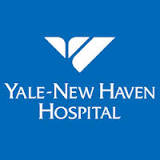Prehospital Use of Ultrasound in Undifferentiated Shortness of Breath
| Status: | Recruiting |
|---|---|
| Conditions: | Pneumonia, Pulmonary |
| Therapuetic Areas: | Pulmonary / Respiratory Diseases |
| Healthy: | No |
| Age Range: | 18 - Any |
| Updated: | 1/11/2018 |
| Start Date: | September 2016 |
| End Date: | September 2018 |
| Contact: | Ryan Coughlin, MD |
| Email: | ryan.coughlin@yale.edu |
| Phone: | +1 (203) 785-4710 |
This is a pilot observational feasibility study of the ability of paramedics to assess
thoracic ultrasound findings in the prehospital environment. The primary goal of the study is
to determine whether paramedics are able to accurately assess for sonographic B-lines in
patients with undifferentiated shortness of breath at least 80% of the time in the
prehospital environment using a portable ultrasound (U/S) device.
thoracic ultrasound findings in the prehospital environment. The primary goal of the study is
to determine whether paramedics are able to accurately assess for sonographic B-lines in
patients with undifferentiated shortness of breath at least 80% of the time in the
prehospital environment using a portable ultrasound (U/S) device.
In the first phase of the study, a cohort of senior and supervisory paramedics will be
recruited into the study. These paramedics would undergo didactic and hands-on training to
learn how to operate the U/S machine, and obtain and interpret basic U/S images. The
paramedics will then participate in video review sessions and spend time in the emergency
department (ED) with the U/S team to get hands-on experience with patients. In the second
phase of the study, paramedics will be staffing ambulances or fly cars in and around the
greater New Haven region and will respond to dyspnea calls. At each call, the paramedic will
initially evaluate the patient clinically conducting a standard history and physical exam.
The paramedic will then use the portable U/S machine to look for the presence of either
unilateral or bilateral B-lines indicating possible pneumonia (in the case of unilateral
B-lines) or pulmonary edema (in the case of bilateral B-lines). The paramedic will then
document the presence or absence of B-lines for each lung on the prehospital study sheet. The
paramedic will then use the U/S to evaluate for the presence of pleural effusions, lung
sliding and pericardial effusion.
recruited into the study. These paramedics would undergo didactic and hands-on training to
learn how to operate the U/S machine, and obtain and interpret basic U/S images. The
paramedics will then participate in video review sessions and spend time in the emergency
department (ED) with the U/S team to get hands-on experience with patients. In the second
phase of the study, paramedics will be staffing ambulances or fly cars in and around the
greater New Haven region and will respond to dyspnea calls. At each call, the paramedic will
initially evaluate the patient clinically conducting a standard history and physical exam.
The paramedic will then use the portable U/S machine to look for the presence of either
unilateral or bilateral B-lines indicating possible pneumonia (in the case of unilateral
B-lines) or pulmonary edema (in the case of bilateral B-lines). The paramedic will then
document the presence or absence of B-lines for each lung on the prehospital study sheet. The
paramedic will then use the U/S to evaluate for the presence of pleural effusions, lung
sliding and pericardial effusion.
Inclusion Criteria:
- Dyspnea and any of the following:
- Respiratory rate > 20
- Room air oxygen saturation < 92%
- Accessory muscle use, tripod position, nasal flaring
- Exam with evidence of rales/rhonchi or wheezing
- In acute respiratory distress on paramedic evaluation
- Any patient in acute respiratory distress with
Exclusion Criteria:
- Trauma
- Burns
- Pregnancy
- Kussmaul respirations from metabolic acidosis
- Cheyne-stokes from increased ICP (intracranial pressure), heart failure or CVA
- Drowning
We found this trial at
2
sites
Click here to add this to my saved trials
Yale-New Haven Hospital Relying on the skill and expertise of more than 4,500 university and...
Click here to add this to my saved trials
